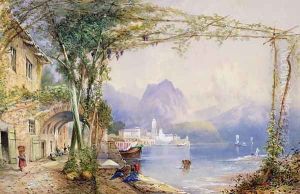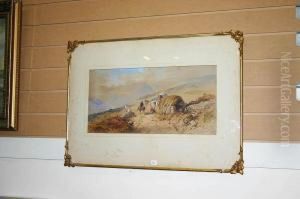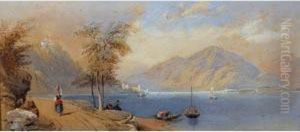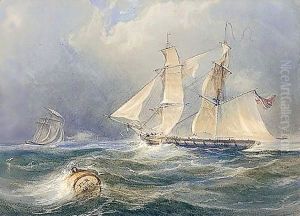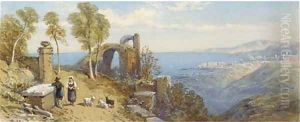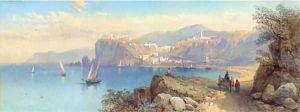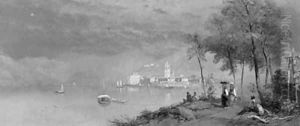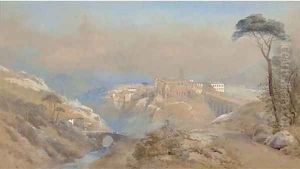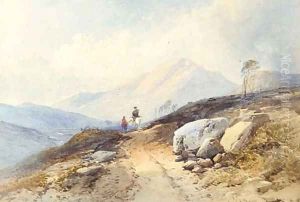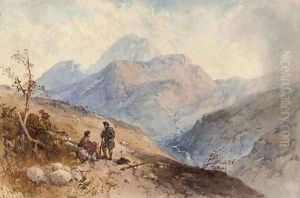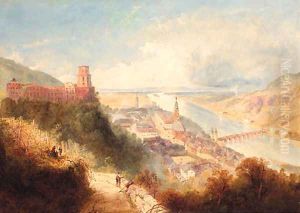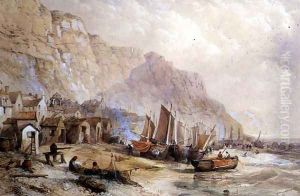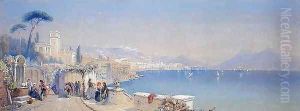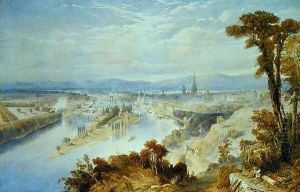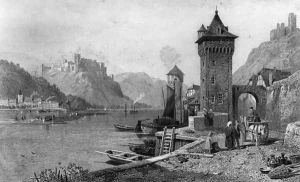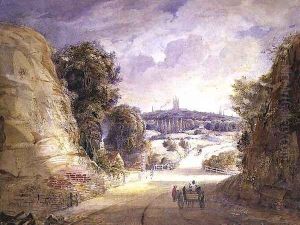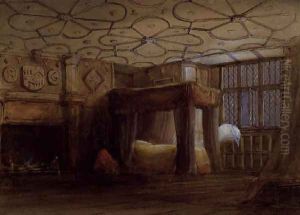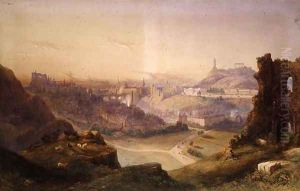Thomas Charles Leeson Rowbotham Paintings
Thomas Charles Leeson Rowbotham was an Irish watercolour landscape and marine painter. Born in 1823 in Dublin, Ireland, he was part of a family that was well-acquainted with the arts; his father, Thomas Leeson Scrase Rowbotham, was also a notable landscape artist. Growing up in an artistic environment, Thomas Charles was heavily influenced by his father and followed in his footsteps.
Rowbotham initially began his career by exhibiting at the Royal Hibernian Academy in Dublin from 1840 onwards. His work quickly gained attention for its delicate and skillful portrayal of landscapes and coastal scenes, often characterized by their atmospheric effects and fine detail. He painted scenes from across Ireland, the United Kingdom, and during his travels throughout Europe.
In 1851, he moved to London, where his career further flourished. He became a frequent exhibitor at the Royal Academy, the British Institution, and the Society of British Artists, venues that were central to the art scene during the Victorian era. His reputation grew, and he became known for his teaching as well; he wrote a series of popular instructional books on drawing and painting in watercolours, contributing to the Victorian era's enthusiasm for watercolour painting.
Thomas Charles Leeson Rowbotham's style is often associated with the luminous and romantic qualities of the Pre-Raphaelite movement, although he maintained a distinct personal approach to his landscapes. His works are notable for their clarity, colour, and the sense of tranquility they often evoke.
Throughout his life, Rowbotham remained an active member of the artistic community. He was a member of the New Water Colour Society, where he also exhibited his works. His contributions to the art of watercolour painting were significant during his time, and his paintings are now housed in various collections and museums, appreciated for their historical and aesthetic value.
Rowbotham passed away in 1875, leaving behind a legacy of work that continues to be celebrated for its contribution to 19th-century British landscape and marine painting.
